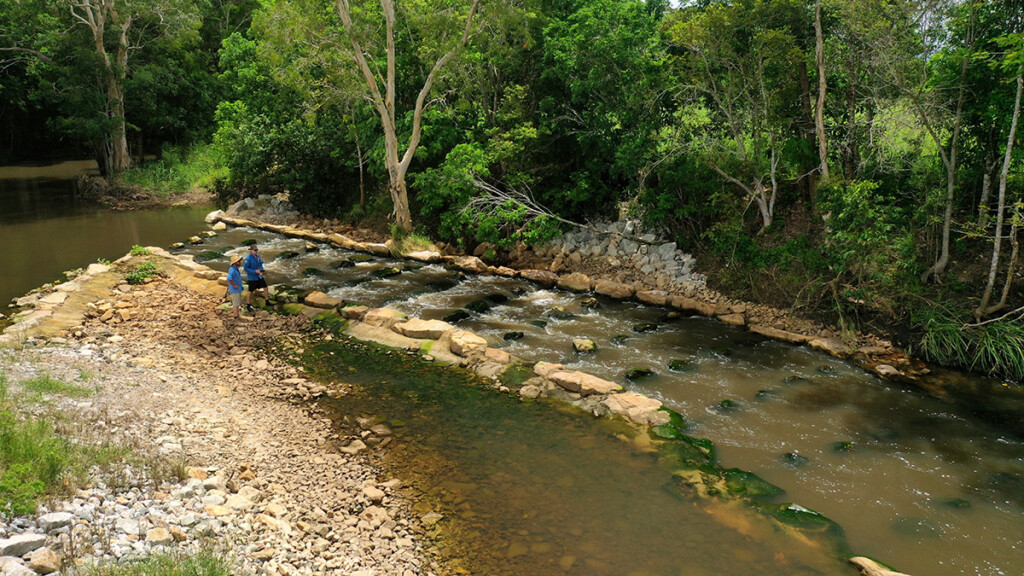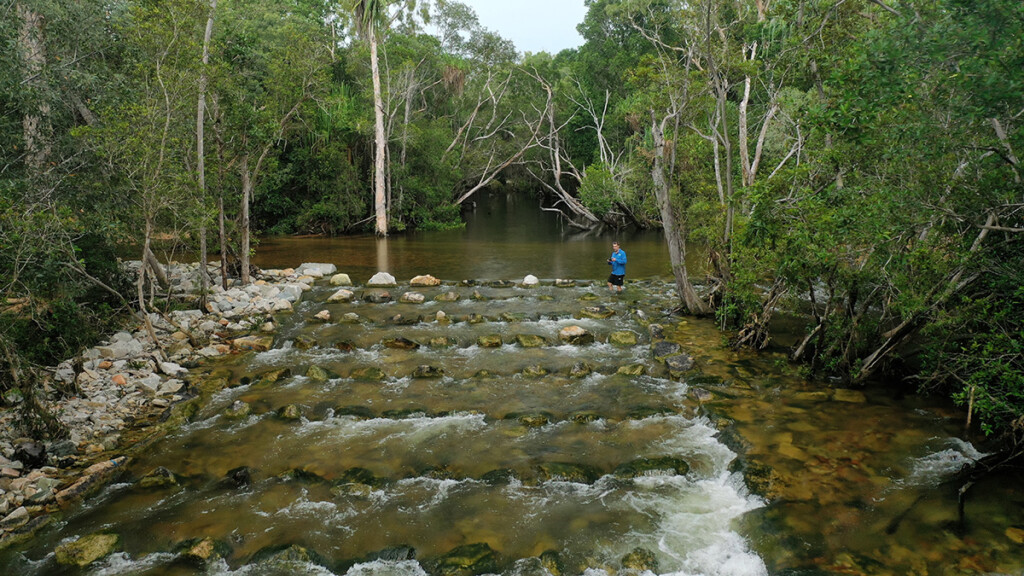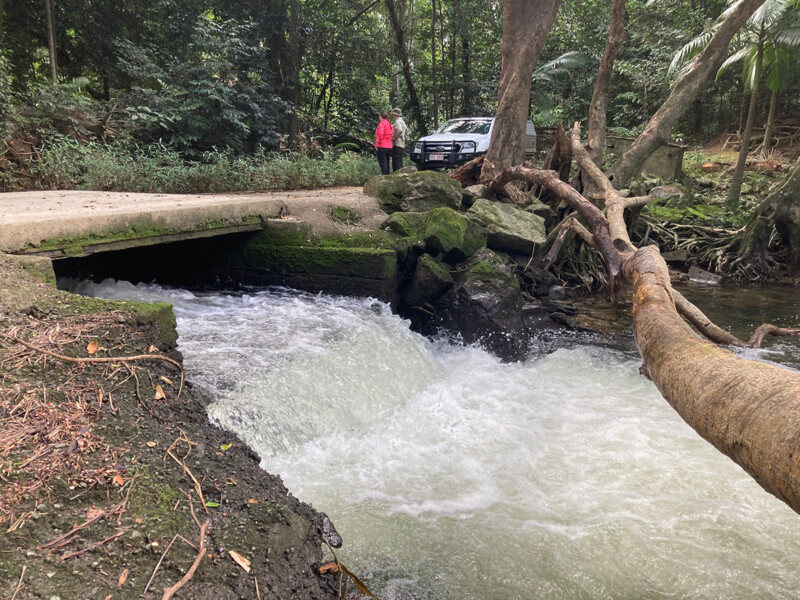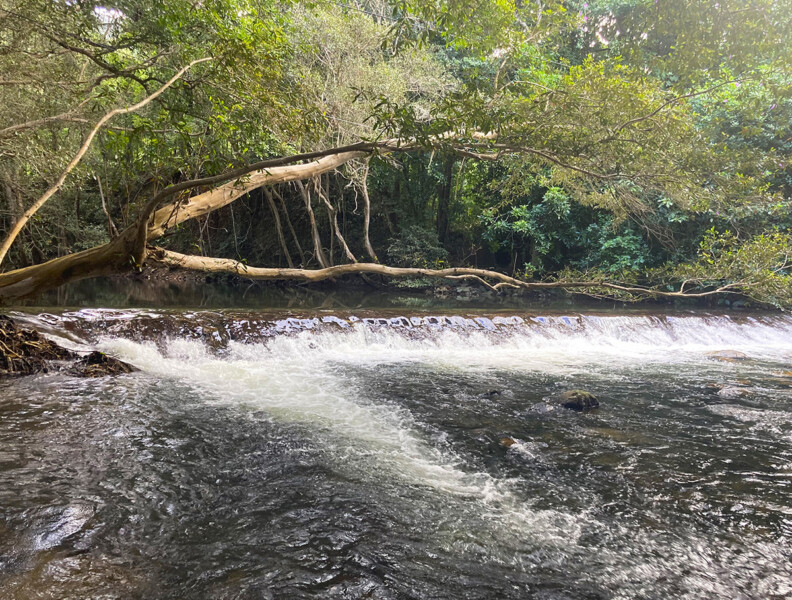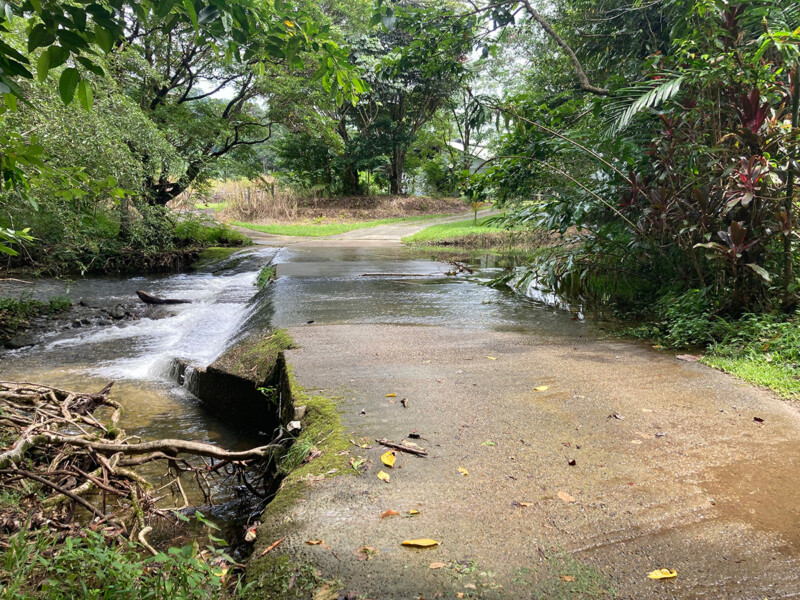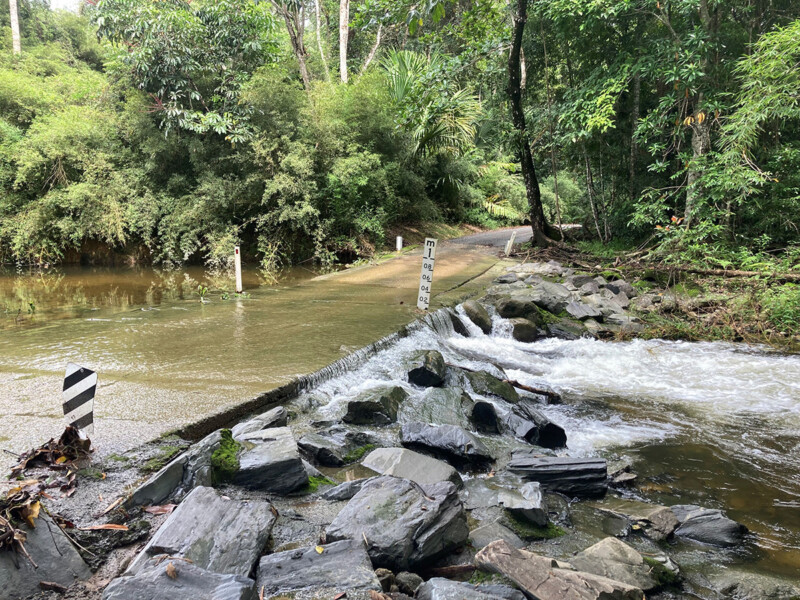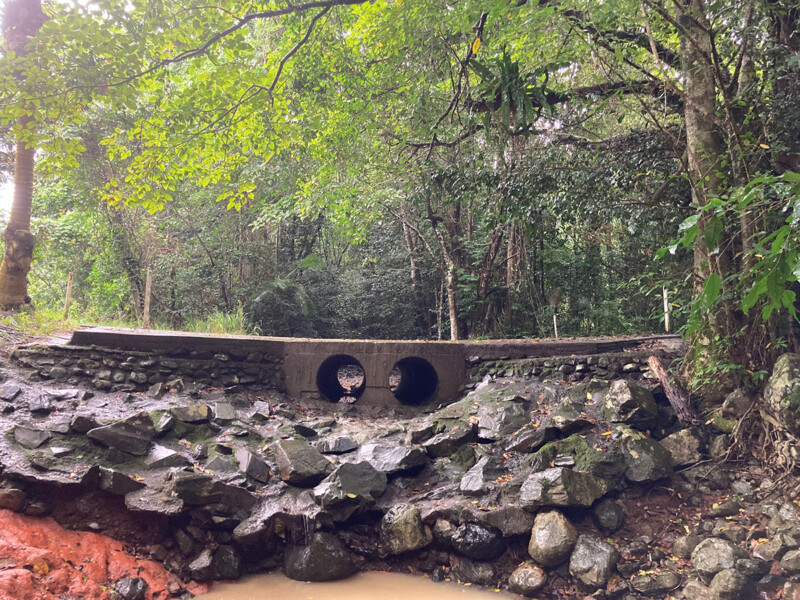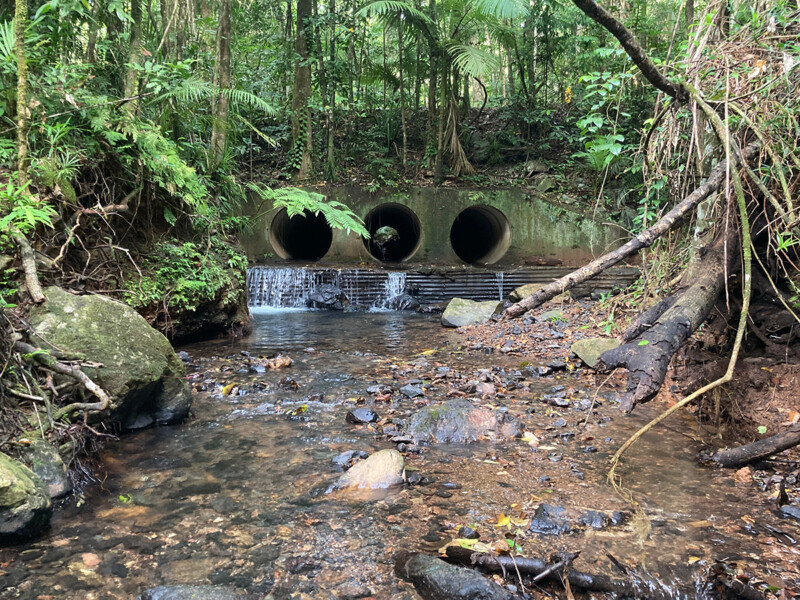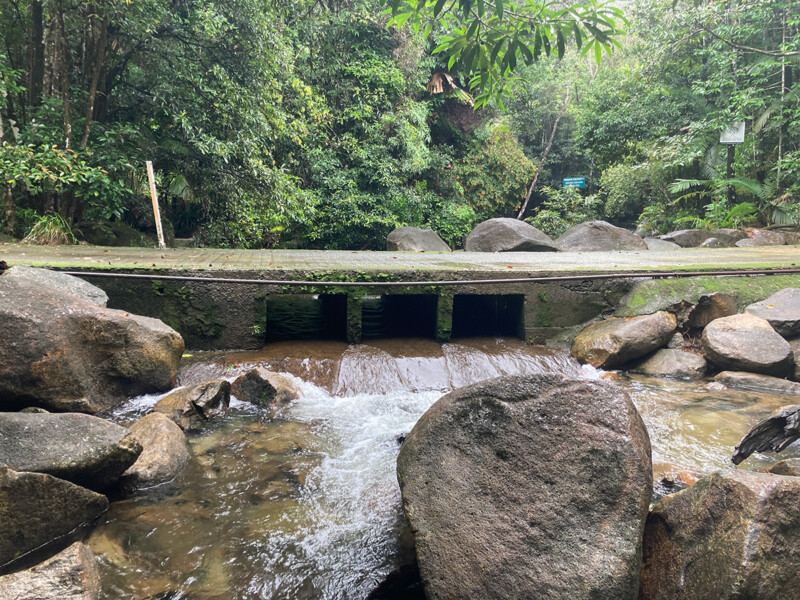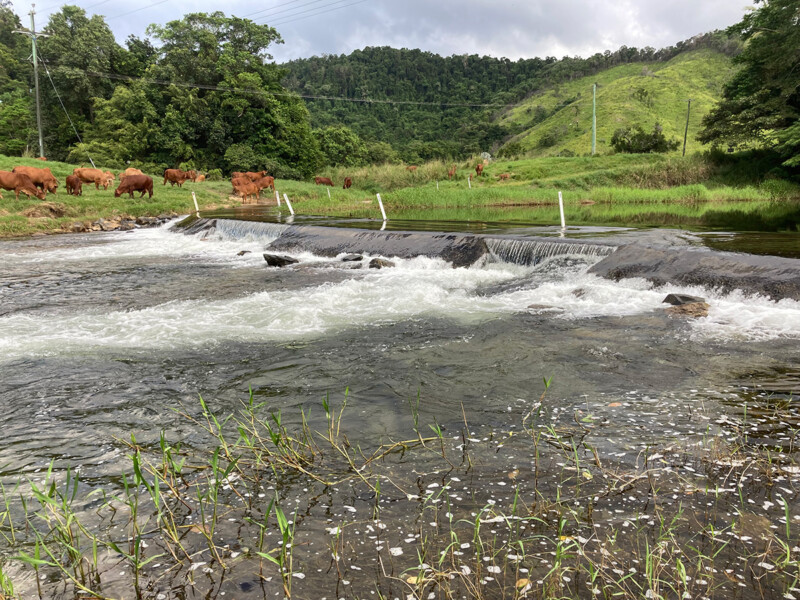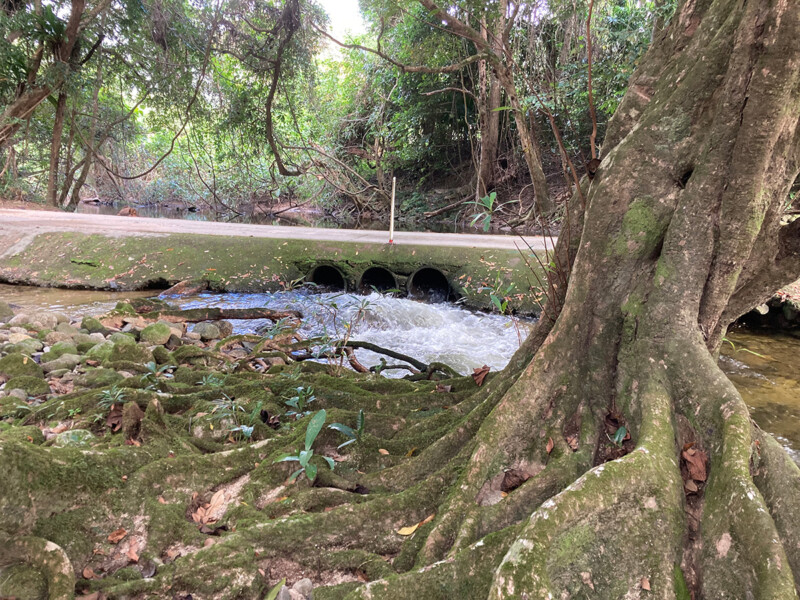Daintree to Lower Barron Fish Barrier Prioritisation project
Fish migration is an essential life-history adaptation utilised by many freshwater fish species in the Wet Tropics region’s coastal catchments.
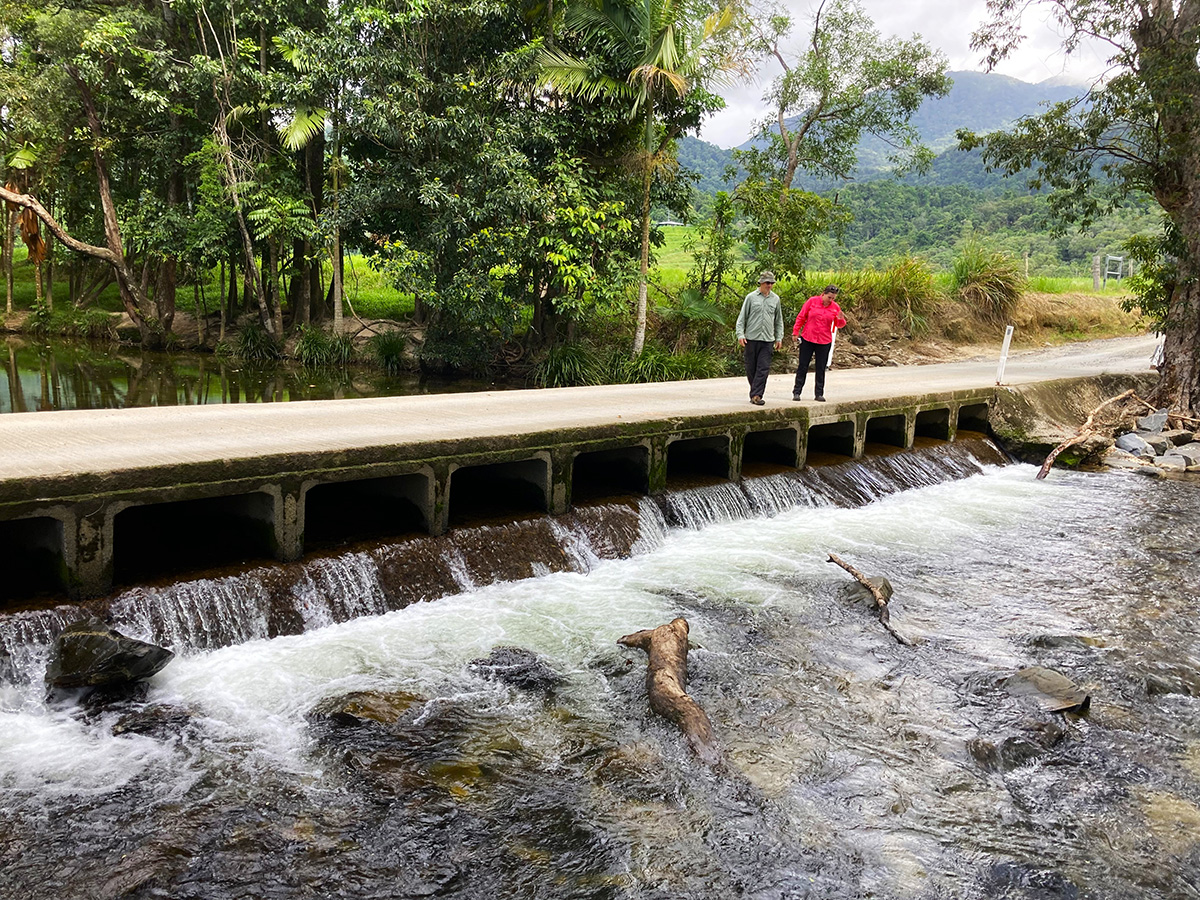
A comprehensive study
In 2023, Catchment Solutions partnered with Terrain NRM to conduct a comprehensive study on fish barriers within coastal catchments from the Barron to the Daintree, encompassing the Bloomfield River. The primary objective was to assess the large number of man-made barriers that prevent, delay and obstruct fish migration in the Daintree, Mossman, Mowbray, Bloomfield and Lower Barron River catchments. These barriers were evaluated based on their cumulative impact on aquatic ecosystems, fisheries resources, economy, and local communities. This study, conducted alongside the Murray and Lower Herbert Rivers Fish Barrier Prioritisation, aimed to prioritise barriers and their remediation efforts in the southern Wet Tropics region.

Fish migration is an essential life-history adaptation utilised by many freshwater fish species in the Wet Tropics region’s coastal catchments. Migration strategies between key habitats have evolved for various purposes, including feeding, reproduction, predator avoidance, nursery habitat utilisation, genetic diversity maintenance, and population dispersal. Barriers disrupting connectivity not only affect fisheries’ productivity but also create conditions conducive to invasive pest fish species like tilapia. Importantly, around 70% of freshwater fish species in the Daintree to Lower Barron regions migrate between estuarine and freshwater environments, including iconic species such as barramundi, mangrove jack, jungle perch, tarpon, giant herring, and long-finned eels. Lesser-known species, like empire gudgeon, red scat, roman-nose goby, and the critically endangered opal cling goby (Stiphodon semoni) also rely on migration between saltwater and freshwater for their life cycles and contribute significantly to aquatic ecosystems. Remediating barriers and preserving connectivity between saltwater and freshwater is crucial for maintain freshwater fish community condition and enhancing overall aquatic ecosystem health.

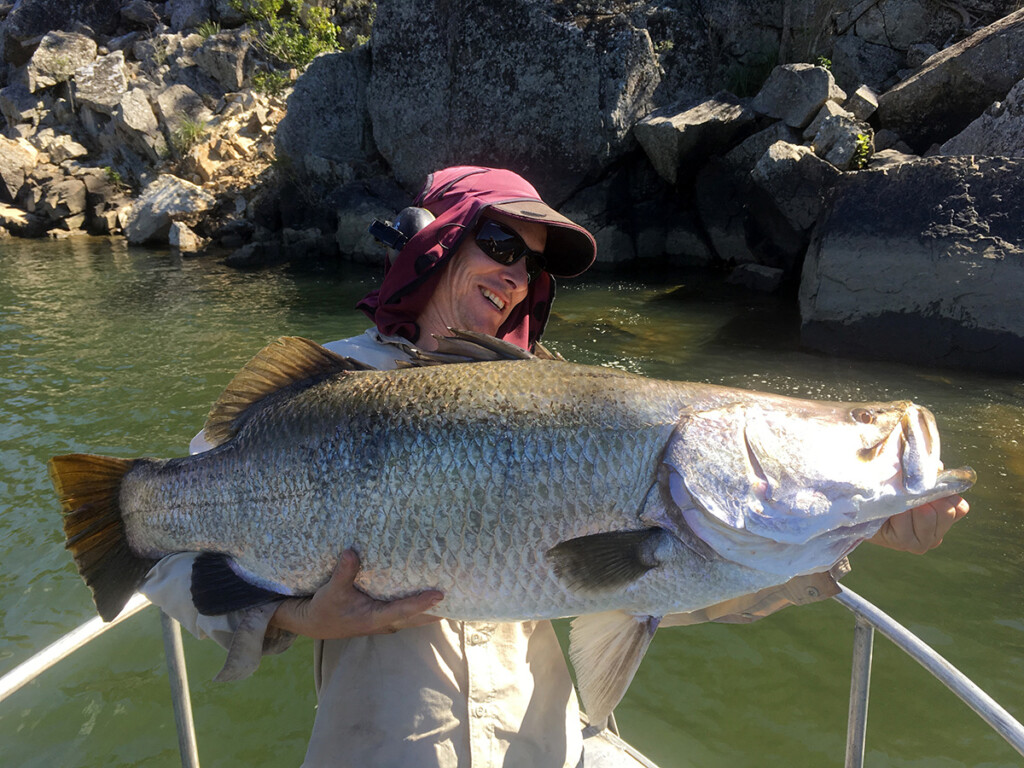
Examples of barriers identified in the project:
Top-ranking barriers
A catchment-scale river network analysis tool in GIS was employed to prioritise these barriers based on biological and geographical criteria, generating a prioritised list for on-site validation.
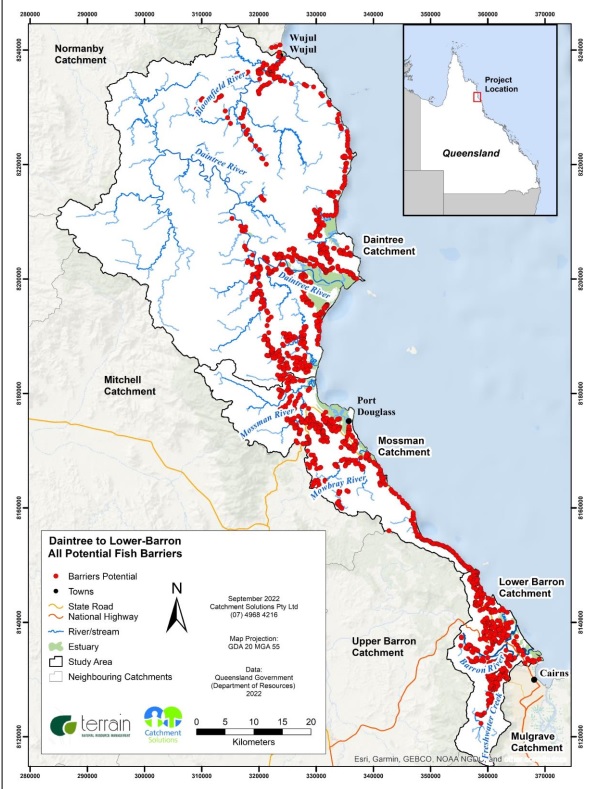
Following field validation, a top 30 priority list of barriers in the northern Wet Tropics region was produced, outlining remediation options and indicative costs. The top-ranking barriers impacting the region’s fish populations and aquatic ecosystem health include:
- Granite Creek – Redundant Causeway – Bloomfield River catchment
- South Mossman River – Mossman Mill Weir – Mossman River catchment
- Marins Creek – Culvert Causeway – Daintree River catchment
- Stewart Creek – Pipe Culvert Causeway – Daintree River catchment
- South Mossman River – Shannonvale Rd Causeway – Mossman River catchment
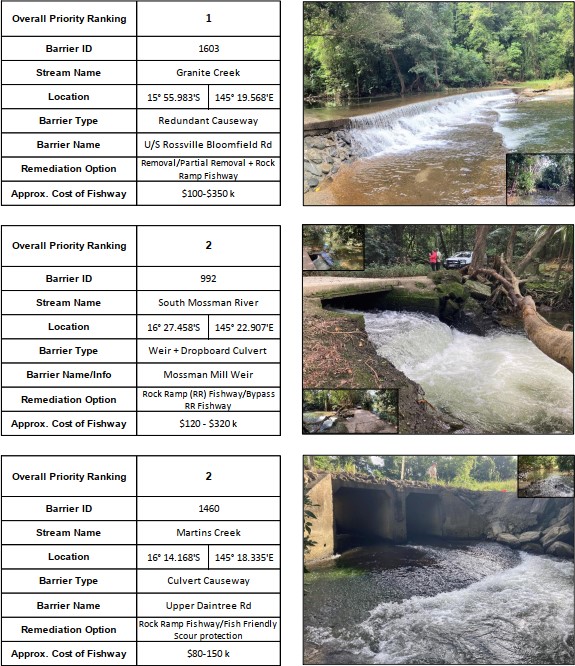
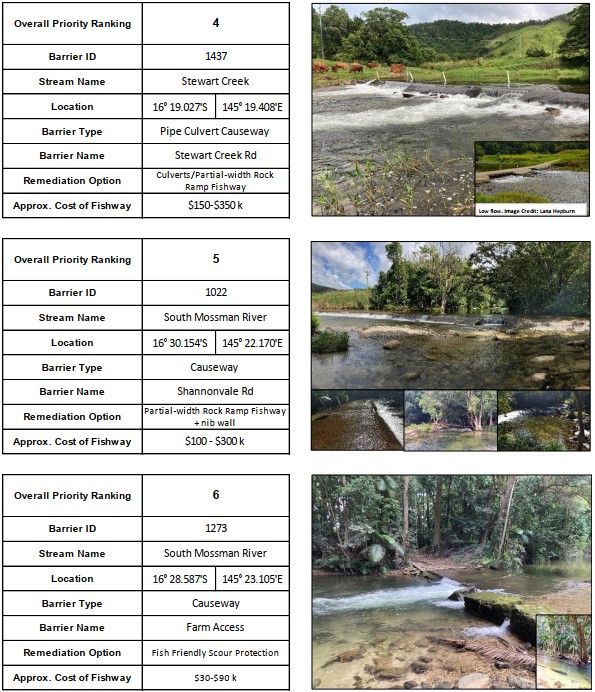
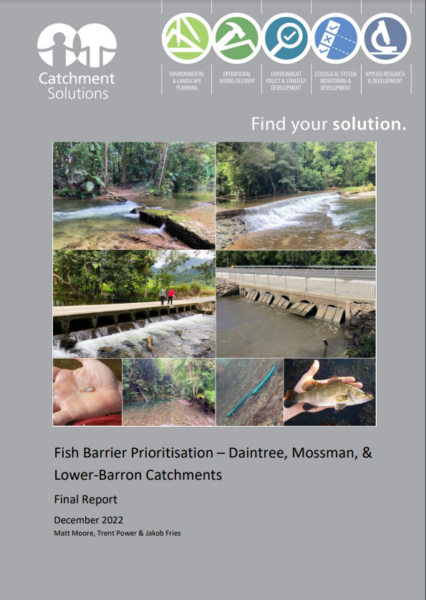
After identifying and prioritising fish barriers, the goal is to appropriately remediate these structures using nature-like rock ramp fishways

